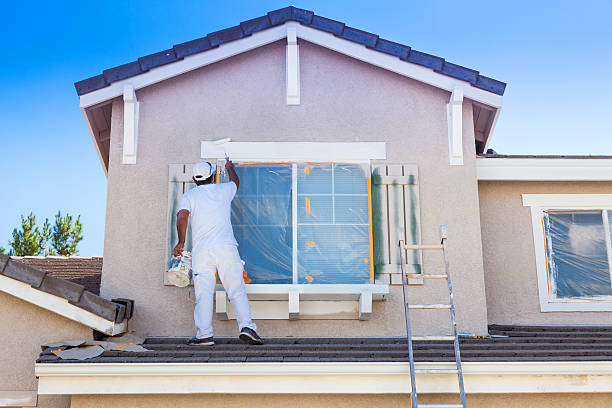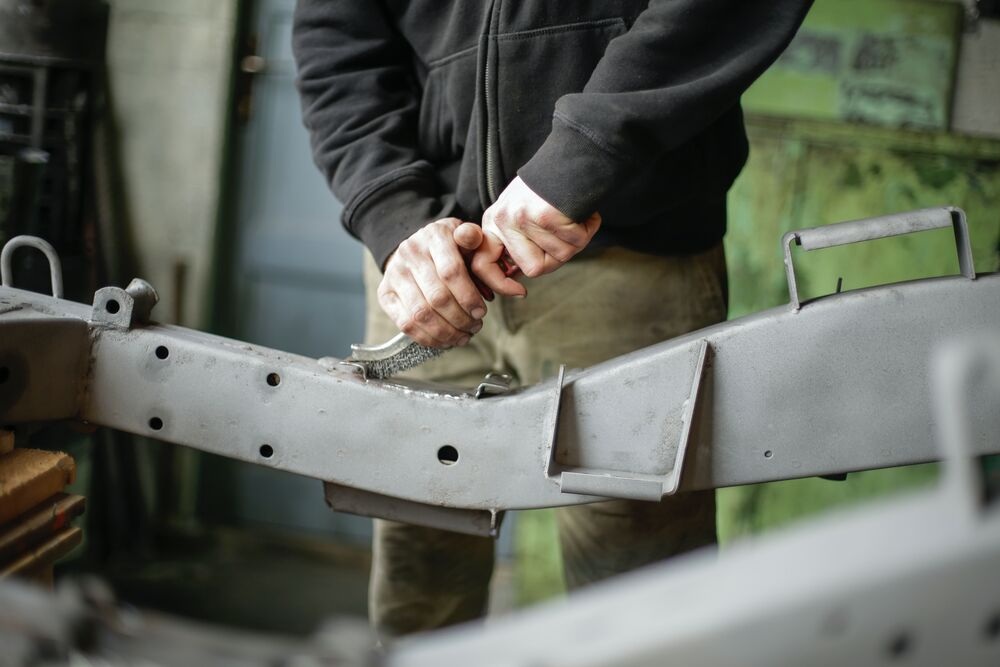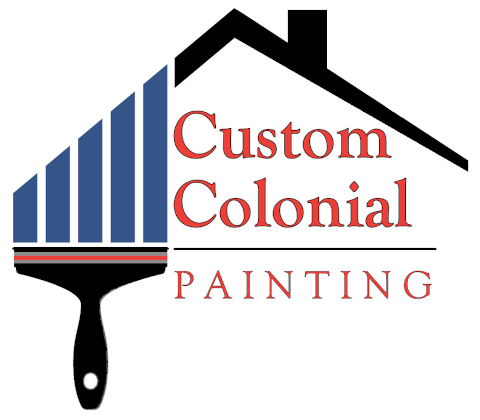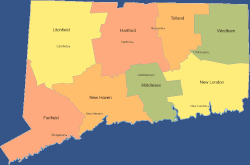Table of Contents
Key Takeaways
✔ Ideal temperatures for exterior house painting service range between 50°F and 85°F for best results.
✔ Professional house painters recommend avoiding painting in cold, humid, or rainy weather.
✔ Full-service exterior home painting companies carefully plan around seasonal and daily weather changes.
✔ Residential exterior painting requires proper surface preparation, quality materials, and the right timing.
✔ Licensed exterior house painters help prevent common problems like peeling, cracking, and uneven finishes.
✔ A gallon of paint typically covers 400 square feet, but textured surfaces or color changes may require more.
✔ Choosing the best house painting services ensures longer-lasting, more beautiful results with fewer costly touch-ups.

Painting the outside of a house is not just about picking a color and getting started; timing matters just as much as technique. When temperatures dip too low, even the best exterior house painting service can face challenges that affect the finish, durability, and overall success of a project.
With help from licensed exterior house painters, it’s easier to navigate the seasons and achieve lasting, beautiful results.
What is the Best Outdoor Painting Temperature?
The best outdoor painting temperature usually falls between 50°F and 85°F, with low humidity and minimal wind. Within this range, paint adheres smoothly, dries evenly, and achieves the protective qualities needed for long-term performance.
Professional house painters near me in Westport, CT, often schedule residential exterior painting projects around these conditions to guarantee the best results, making timing as critical as the products used.
The Best Seasons for Exterior House Painting
Choosing the right season is just as important as choosing the right exterior house painting service. Temperature, humidity, and weather conditions shift with each season, and understanding these patterns helps protect paint quality and lifespan. Full-service exterior home painting companies carefully plan projects around seasonal changes to deliver the best results.
1. Spring
Spring offers excellent conditions for residential exterior painting once temperatures stabilize above 50°F. Many professional house painters nearby in Westport, CT, recommend waiting until late spring to avoid early frosts and heavy rains. The mild warmth and moderate humidity create an ideal environment for smooth, even drying.
2. Summer
Summer provides consistent warmth, but extreme heat or sudden storms can pose challenges. Licensed exterior house painters prefer early mornings or late afternoons to avoid applying paint under intense midday sun. Working with the best house painting services ensures proper timing and techniques to prevent bubbling, cracking, or uneven finishes.
3. Fall
Fall is often considered one of the best seasons for exterior house painting service projects. Cooler, dry air helps paint adhere better, and there’s usually less rain compared to spring. Full-service exterior home painting teams often recommend scheduling projects early in the season before temperatures dip too low overnight.
More Temperature Considerations for Exterior Painting Projects
Even when daytime highs seem perfect, it is essential to consider overnight lows, which can dramatically slow paint curing. For residential exterior painting to last, temperatures must stay within the optimal range for at least 24 hours after application. The best house painting services factor in full-day and night cycles to protect the finish and prevent common cold-weather issues like peeling and cracking.
How Temperature Affects Exterior House Painting Quality
Temperature has a direct impact on how paint applies, dries, and bonds to surfaces. Choosing a skilled exterior house painting service ensures adjustments are made based on the daily weather forecast to protect the quality of the work. Here’s how temperature can create challenges if not properly managed:
1. Poor Adhesion
When it’s too cold, paint cannot form a strong bond with the surface, leading to peeling and flaking over time. Licensed exterior house painters avoid these problems by using products suited to the current weather and by timing work for when temperatures are steady. Full-service exterior home painting experts often recommend surface-specific primers to improve adhesion in borderline conditions.
2. Extended Drying Times
Cold air slows down the drying process, leaving fresh paint vulnerable to dirt, debris, and damage. Residential exterior painting requires careful timing to avoid trapping moisture or allowing contaminants to settle into the finish. Professional house painters nearby in Westport, CT, monitor conditions closely to ensure each coat dries as intended.
3. Uneven Finishes and Color Issues
Inconsistent temperatures can cause paint to cure unevenly, leading to color streaks or glossy and dull patches. The best house painting services know how to adjust application techniques, including thinner layers and longer drying times. Proper planning leads to a more uniform, attractive finish that boosts curb appeal.
How Humidity Affects Exterior Painting
Humidity can be just as important as temperature when planning an exterior house painting service. High moisture levels in the air interfere with drying, extend curing times, and weaken the overall finish if not properly managed. Full-service exterior home painting crews evaluate humidity levels carefully before starting projects to ensure strong, durable results.
1. Slower Drying and Curing
When humidity is high, paint absorbs moisture from the air, delaying its ability to set properly. Residential exterior painting projects often experience longer work times during muggy days, which can create scheduling challenges. Professional house painters recommend working during low-humidity periods whenever possible.
2. Blistering and Peeling
Trapped moisture under fresh paint can lead to bubbles, blisters, and peeling layers. Licensed exterior house painters combat this by checking dew points and using specialty products designed for humid conditions. The best house painting services use expert techniques to minimize surface issues caused by fluctuating moisture.
3. Mold and Mildew Growth
Excess humidity combined with damp surfaces can encourage mold and mildew growth under the paint. Full-service exterior home painting providers take extra steps to clean and prime surfaces before application. Careful preparation ensures that the exterior remains healthy, attractive, and easier to maintain long-term.
Painting Cost Breakdown 2025
A fresh coat of paint can make a dramatic difference in the appearance and value of a home. Whether tackling an interior refresh or investing in residential exterior painting, understanding the latest cost estimates helps plan the project wisely. Here’s a detailed breakdown of painting costs in 2025, including averages, ranges, and tips to stay on budget:
Interior Painting Costs
Hiring a professional for interior painting typically costs between $967 and $3,076, with an average around $2,014. Factors like square footage, the number of coats, ceiling work, and detailed trim affect final pricing. Working with the best house painting services ensures a smoother process and better long-term results.
Home Size | Interior Painting Cost |
1,000 square feet | $2,000 to $6,000 |
1,500 square feet | $3,000 to $9,000 |
2,000 square feet | $4,000 to $12,000 |
2,500 square feet | $5,000 to $15,000 |
3,000 square feet | $6,000 to $18,000 |
Exterior Painting Costs
Painting the exterior of a home costs more, with prices ranging from $1,819 to $4,551 and an average of $3,178. Full-service exterior home painting projects must account for surface preparation, siding material, and home height. Professional house painters nearby in Westport, CT, often adjust their quotes based on these specific needs.
Home Size | Exterior Painting Cost |
1,000 square feet | $1,500 to $4,000 |
1,500 square feet | $2,250 to $6,000 |
2,000 square feet | $3,000 to $8,000 |
2,500 square feet | $3,750 to $12,000 |
Breaking Down the Cost to Paint a House
Understanding where the money goes during a painting project can make it easier to plan a realistic budget. Both residential exterior painting and interior jobs involve more than just the cost of paint itself. Here’s a closer look at the major factors that influence the total price of an exterior house painting service:
1. Labor Costs
Labor typically accounts for 75% to 95% of the total project expense. Most professional house painters spend significant time on surface preparation to ensure a long-lasting finish.
2. Paint Costs
Paint costs between $20 and $70 per gallon, depending on quality and special features. Full-service exterior home painting companies often recommend premium paints to improve durability and coverage.
3. Primer Costs
Primer usually ranges from $20 to $75 per gallon and is crucial for strong adhesion and color uniformity. Licensed exterior house painters always factor primer into projects where surface protection matters most.
4. Equipment and Supplies
Materials like tarps, ladders, brushes, rollers, and tape can add several hundred dollars to overall project costs. Professional house painters nearby in Westport, CT, typically include all supply costs in their detailed estimates.
5. Surface Condition and Preparation
Homes that require scraping, sanding, or patching before painting will see higher labor costs. Choosing the best house painting services ensures surfaces are properly prepped to protect the new paint job.
How Much Does a Gallon of Paint Cover?
On average, one gallon of paint covers about 400 square feet, which is roughly enough for a small bedroom or bathroom with one coat. However, most residential exterior painting and interior projects require at least two coats, meaning a gallon effectively covers around 200 square feet with full coverage. Textured surfaces like stucco, popcorn ceilings, and brick tend to absorb more paint, so additional gallons may be necessary.
Working with a full-service exterior home painting company helps ensure proper planning, the right amount of materials, and professional-quality results without the risk of running short.
Tips to Save on Painting Costs
Painting projects can quickly add up in cost, but smart planning can help cut expenses without sacrificing quality, especially when hiring a full-service exterior home painting company.
A few strategic choices can make a big difference—especially since a HomeLight survey of 1,000 real estate agents found that painting a home’s exterior can add over $7,500 in resale value, delivering a 152% return on investment.
Here are five practical ways to save money while still getting professional, lasting results:
1. Do Some of the Prep Work Yourself
Surface preparation takes up a large portion of a painter’s time and labor costs. Tasks like moving furniture, trimming shrubs, removing outlet covers, or sanding small areas can easily be done ahead of time. By tackling prep yourself, it allows professional house painters to focus solely on painting, reducing overall labor hours.
2. Get Multiple Estimates
Always request quotes from at least three licensed exterior house painters to compare pricing, services, and timelines. Competitive bids help ensure fair market pricing and sometimes reveal opportunities for discounts or extras. Hiring the best house painting services at the right price starts with doing a little homework upfront.
3. Time the Project During Off-Peak Seasons
Scheduling a painting project during slower seasons, like late fall or early spring, can often lead to better pricing. Full-service exterior home painting companies may offer seasonal discounts to keep crews busy year-round. Just make sure the weather conditions still meet the requirements for quality residential exterior painting.
4. Limit the Scope of the Project
Scaling back the size of the project can lead to major savings without drastically changing the final look. Skipping non-essential areas like ceilings, closets, or accessory structures can cut both material and labor costs. When working with an exterior house painting service, be clear about the priorities to avoid unnecessary add-ons.
5. Choose Quality Materials Wisely
Investing in high-quality paints may cost more upfront but often reduces the need for multiple coats and future repainting. Professional house painters in Westport, CT, frequently recommend premium products for better coverage and longer-lasting results. This strategy saves money over time by protecting against peeling, fading, and premature wear.

How to Remove Paint from Metals
Removing paint from metal surfaces can feel tricky, but with the right tools and techniques, the process becomes much easier. Here’s a step-by-step guide to help strip away old paint safely and effectively:
1. Use a Paint Stripper
While the sun’s UV rays can break down pigments, chemical paint strippers are specifically designed to break down paint layers quickly and efficiently. Apply the stripper with a brush, following the product instructions carefully, and allow it to sit for the recommended time. Afterward, the softened paint can be scraped off gently using a putty knife or scraper.
2. Try Heat Guns for Thick Paint
A heat gun works by warming the paint until it bubbles and loosens from the metal surface. Hold the heat gun a few inches away, move it slowly, and scrape off the softened paint with a metal scraper. Always wear gloves and eye protection, as both the tool and the paint can become extremely hot.
3. Use Sanding or Wire Brushes
For smaller projects or stubborn areas, sanding or using a wire brush can remove paint mechanically. Attach a wire brush to a drill for larger surfaces, or use hand sanding blocks for detailed spots. Take care not to scratch the metal underneath, especially if the piece is delicate.
4. Soak in Vinegar or Baking Soda Solutions
For small metal items, soaking them in a solution of hot vinegar or a mix of baking soda and water can loosen paint naturally. Submerge the item in the solution for several hours or overnight, then scrub gently with a brush. This method is safer for delicate metals that could be damaged by harsher chemicals.
5. Clean and Prepare the Surface After Removal
Once the paint is removed, it’s important to clean the metal thoroughly to eliminate any residue. Use warm soapy water or a solvent cleaner, then dry the surface completely to prevent rust. For residential exterior painting or metal restoration projects, applying a metal primer afterward ensures a smooth, durable finish.
Frequently Asked Questions (FAQs)
How often should exterior paint be reapplied to a house?
Most homes need a fresh coat of paint every 5 to 10 years, depending on the siding material, climate, and paint quality. Hiring a full-service exterior home painting company helps ensure the job lasts as long as possible by using proper preparation and premium products. If unsure about timing, consulting with professional house painters can provide a clear maintenance plan.
What type of paint is best for exterior house painting?
For most residential exterior painting projects, 100% acrylic latex paint is recommended because of its durability and weather resistance. It offers excellent adhesion and flexibility, especially in fluctuating temperatures. Choosing the right materials with a licensed exterior house painters team ensures a longer-lasting finish that resists peeling and cracking. Working with the best house painting services also guarantees proper primer and paint matching for each surface.
Can rainy or humid weather affect an exterior painting project?
Yes, both rain and high humidity can severely delay or damage an exterior house painting project. Moisture prevents proper drying, weakens adhesion, and can even cause paint to bubble or peel prematurely. That’s why full-service exterior home painting companies monitor weather conditions carefully before beginning any project. Trusting professional house painters ensures scheduling around dry, ideal weather for the best results.
Is pressure washing necessary before exterior painting?
Pressure washing is highly recommended before starting any residential exterior painting project to remove dirt, mildew, and peeling paint. A clean surface allows new paint to bond properly, increasing longevity and appearance. Many licensed exterior house painters include pressure washing as part of their preparation process. Choosing a full-service exterior home painting provider ensures this critical first step isn’t skipped.
What are the signs that exterior paint is failing?
Signs that exterior paint is failing include peeling, cracking, bubbling, chalky residue, and noticeable fading. Addressing these issues early can save money by avoiding costly repairs and prolonging the life of siding materials. Calling in the best house painting services ensures a full inspection and proper recommendations for repainting or repairs. Professional house painters nearby in Westport, CT, can assess the damage and offer solutions tailored to each home’s needs.
Refresh and Protect with Custom Colonial Painting!
Trust Custom Colonial Painting in Westport, CT, to bring new life and lasting protection to any home with expert residential exterior painting. Backed by skilled crews and years of hands-on experience, our team delivers the kind of full-service exterior home painting that stands up to the toughest weather. From precise prep work to flawless final coats, Custom Colonial Painting combines craftsmanship with premium materials to ensure every project is built to last.









